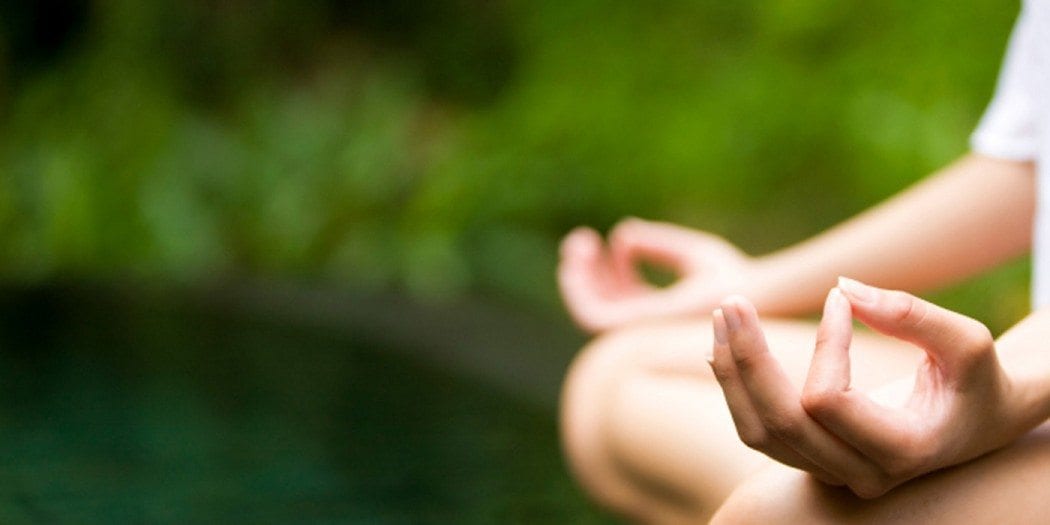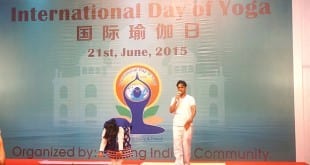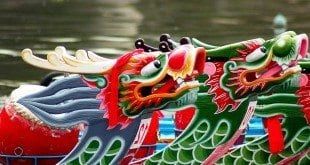On 21st June 2015 the world will consider it as the day of yoga. To celebrate this occasion Indians in Lecong have arranged to give a demonstration of Yoga to the Public to bring about awareness and as a cultural exchange. The Program will be held at
Date: 21st June 2015
Time:9:30AM – 11:00Am
Venu: Hotel Fortuna, No:82, Lecong Avenue, Lecong, Shunde, Foshan China.
Expats and Chinese citizens are equally invited to participate on this occasion to understand more about yoga and see some of the Yoga experts perform live.
INTRODUCTION
Yoga is a 5,000-year-old physical, mental and spiritual practice Having its origin in India, Which Aims to transform both body and mind. On December 11 in 2014, the United Nations General Assembly declared June 21 as the International Day of Yoga. The declaration came after the call for the adoption of 21 June as International Day of Yoga by Hon’ble Indian Prime Minister, Mr. Narendra Modi during his address to UN General Assembly on September 27, 2014 wherein he stated: “Yoga is an invaluable gift of India’s ancient tradition . It embodies unity of mind and body; thought and action; restraint and fulfillment; harmony between man and nature; a holistic approach to health and well-being. It is not about exercise but to discover the sense of oneness with yourself, the world and the nature. ” In Suggesting June 21, which is the Summer Solstice, as the International Day of Yoga, Mr. Narendra Modi had said that, “the date is the longest day of the year in the Northern Hemisphere and has special significance in many parts of the world. ”
Yogi and mystic, Sadhguru notes the importance of this day in the yogic tradition: “On the day of the summer solstice, Adiyogi [the first yogi] turned south and first set his eyes on the Saptarishis or Seven Sages, who were his first disciples to carry the science of yoga to many parts of the world. It is wonderful that June 21 marks this momentous event in the history of humanity.”
INTERNATIONAL SUPPORT
YOGA
The word Yoga is derived from the Sanskrit word ‘Yuj’ which means to join or unite. The union referred to is that of the individual self-uniting with Cosmic Consciousness or the Universal Spirit. Yoga is believed to have evolved during the period of the ‘Sat Yuga’, also called the Golden age. It was not until the discovery of the Indus- valley civilization, the largest civilization: that the knowledge about the origin of Yoga surfaced. One of the earliest expositions on Yoga was written by the Indian sage Patanjali. His work, known today as “Patanjali’s Yoga Sutras” is widely available on the net.
The Eight Limbs of Yoga
“Patanjali defines yoga as” Yoga Chitta Vritti Nirodha “- Yoga is the cessation of mental fluctuations.” Hence, yoga can be defined as a state of complete stillness of mind. To achieve this goal, Patanjali prescribes the eight limbs or stagesevery practitioner must master. Today, Ashtanga yoga (which means ‘eight-limbedyoga’) is sometimes thought to be a particular style or series of postures. Butthese are really the eight stages described by Patanjali. They are:
- Yama (moral restraints)
- Niyama (spiritual practices)
- Asana (seat posture with spine erect)
- Pranayama (breath control)
- Pratyahara (withdrawal of from the organs of sense and the organs of action)
- Dharana (deep state of concentration)
- Dhyana (directing attention to the subject of meditation)
- Samadhi (complete absorption in super consciousness or divine mind)
A Moral and Ethical Lifestyle
Today yoga has become a popular form of callisthenics contributing to the health and fitness of millions. However, earlier yoga was viewed as a complete lifestyle. The first two limbs of Patanajali’s Asthanga yoga, moral and ethical restraints and observances have always been considered the foundation for success in yoga.
“Sage Patanjali lists five Yamas and five Niyamas, but the actual ancient Indian text, comprised of ten Yamas and ten Niyamas.”
Yoga’s Forgotten roots has been beautifully captured in the book ‘Yoga’s Forgotten Foundation – Hinduism’s Code of Conduct. ”
Yoga works on the level of one’s body, mind, emotion and energy. This has given rise to four broad classifications of Yoga:
- Karma Yoga, where we utilize the body
- Jnana Yoga, where we utilize the mind
- Bhakti Yoga, where we utilize the emotion
- Kriya Yoga, where we utilize the energy
Each system of Yoga we practice would fall within the gamut of one or more of these categories. Every individual is a unique combination of these four factors. Only a Guru (a teacher) can advocate the appropriate combination of the four fundamental paths, as is necessary for each seeker
Brief History of Yoga
The science of Yoga has its origin thousands of years ago, long before the first religion or belief systems were born. According to Yogic lore, Shiva has seen as the first yogi or Ādiyogi and the first guru or Ādiguru. Several thousand years ago, on the banks of lake Kantisarovar in the Himalayas, Ādiyogi poured his profound knowledge into the legendary Saptarishis or “seven sages”. These sages carried this powerful Yogic science to different parts of the world including Asia, the Middle East, northern Africa and South America. Interestingly, modern scholars have noted and marvelled at the close parallels found between ancient cultures across the globe. However, it was in India that the Yogic system found its fullest expression. Agastya, the Saptarishi who travelled across the Indian subcontinent, crafted this culture around a core Yogic way of life.
Yoga is widely considered as an “immortal cultural outcome” of the Indus Saraswati Valley Civilisation – dating back to 2700 BC – and has proven itself to cater to both material and spiritual uplift of humanity. A number of seals and fossil remains of Indus Saraswati Valley Civilisation with Yogic motifs and figures performing Yoga sādhana suggest the presence of Yoga in ancient India. The seals and idols of mother Goddess are suggestive of Tantra Yoga. The presence of Yoga is also available in folk traditions, Vedic and Upanishadic heritage, Buddhist and Jain traditions, Darshanas, epics ofMahabharata including Bhagawadgita and Ramayana, theistic traditions of Shaivas, Vaishnavas and Tantric traditions. Though Yoga was being practiced in the pre-Vedic period, the great sage Maharishi Patanjali systematised and codified the then existing Yogic practices, its meaning and its related knowledge through Patanjali’s Yoga Sutras.
After Patanjali, many sages and Yoga masters contributed greatly for the preservation and development of the field through well-documented practices and literature. Yoga has spread all over the world by the teachings of eminent Yoga masters from ancient times to the present date. Today, everybody has conviction about Yoga practices towards the prevention of disease, maintenance and promotion of health. Millions and millions of people across the globe have benefitted by the practice of Yoga and the practice of Yoga is blossoming and growing more vibrant with each passing day.
Visit Foshan Expats for More Such Article
The Site is Mobile Friendly.
This Post is Sponsered by Tentacles soft
View this Post in Chinese 查看中文信息
Reader Reviews
Star Rating
Rate the Article if you Like it, this would help us better understand what our members / readers like to read more.
 Foshan Expats Self Help Forum for Foreigners
Foshan Expats Self Help Forum for Foreigners 








